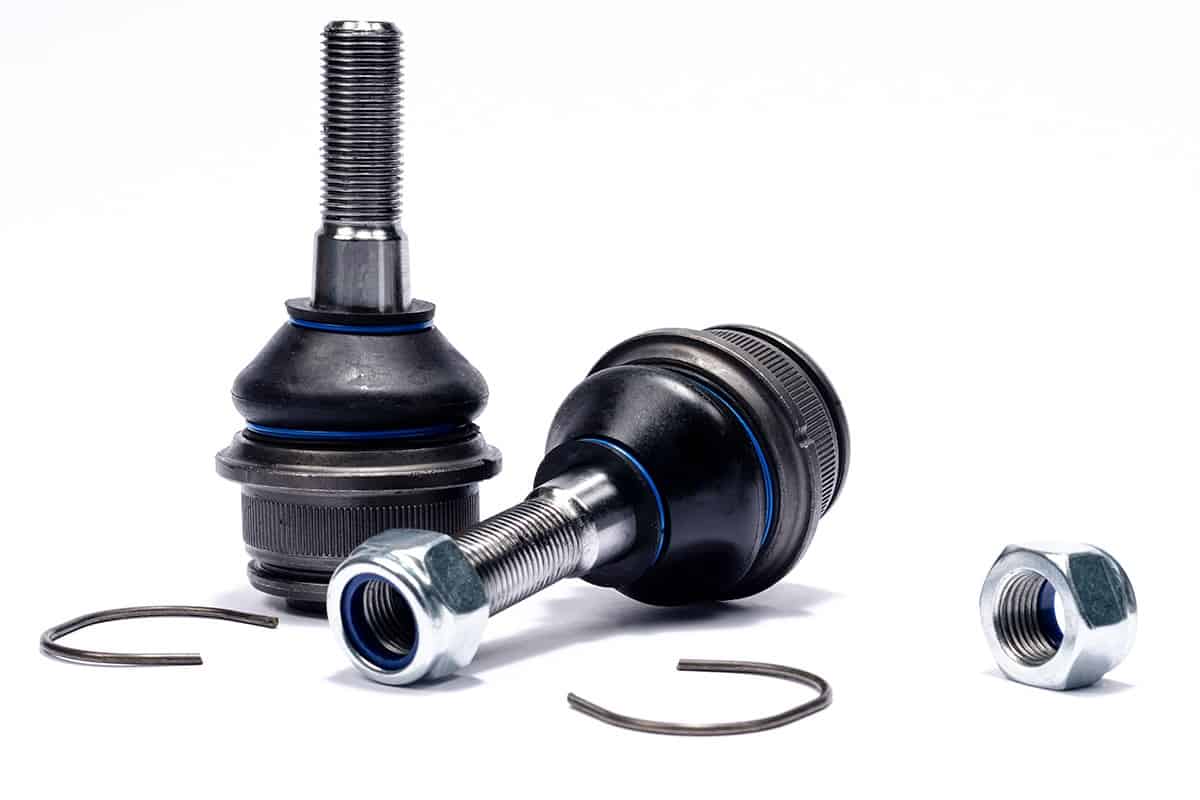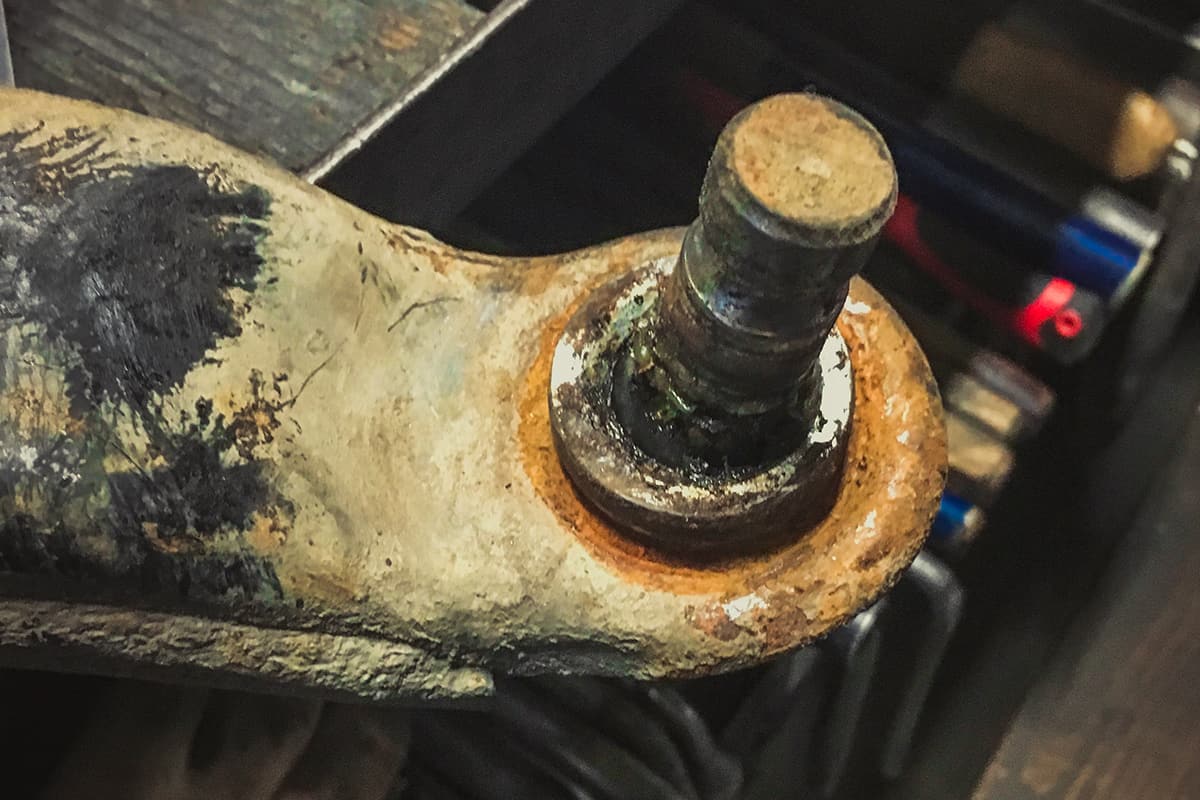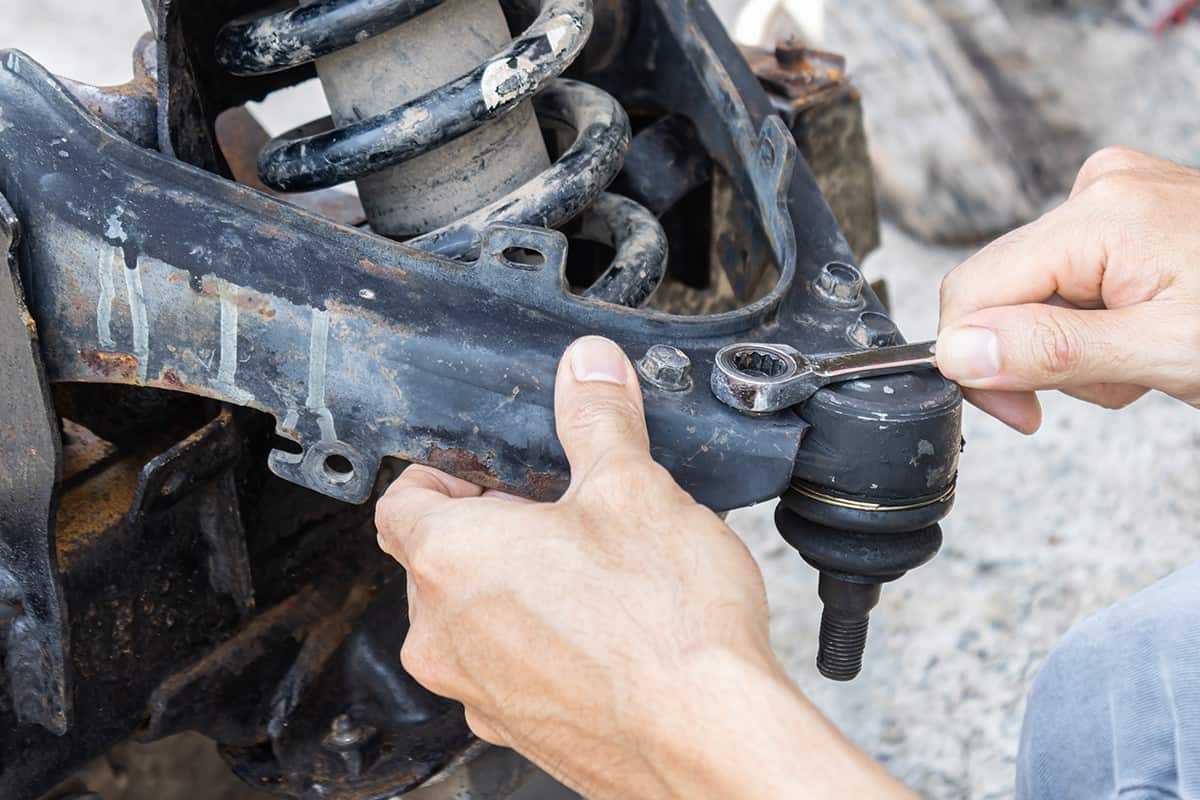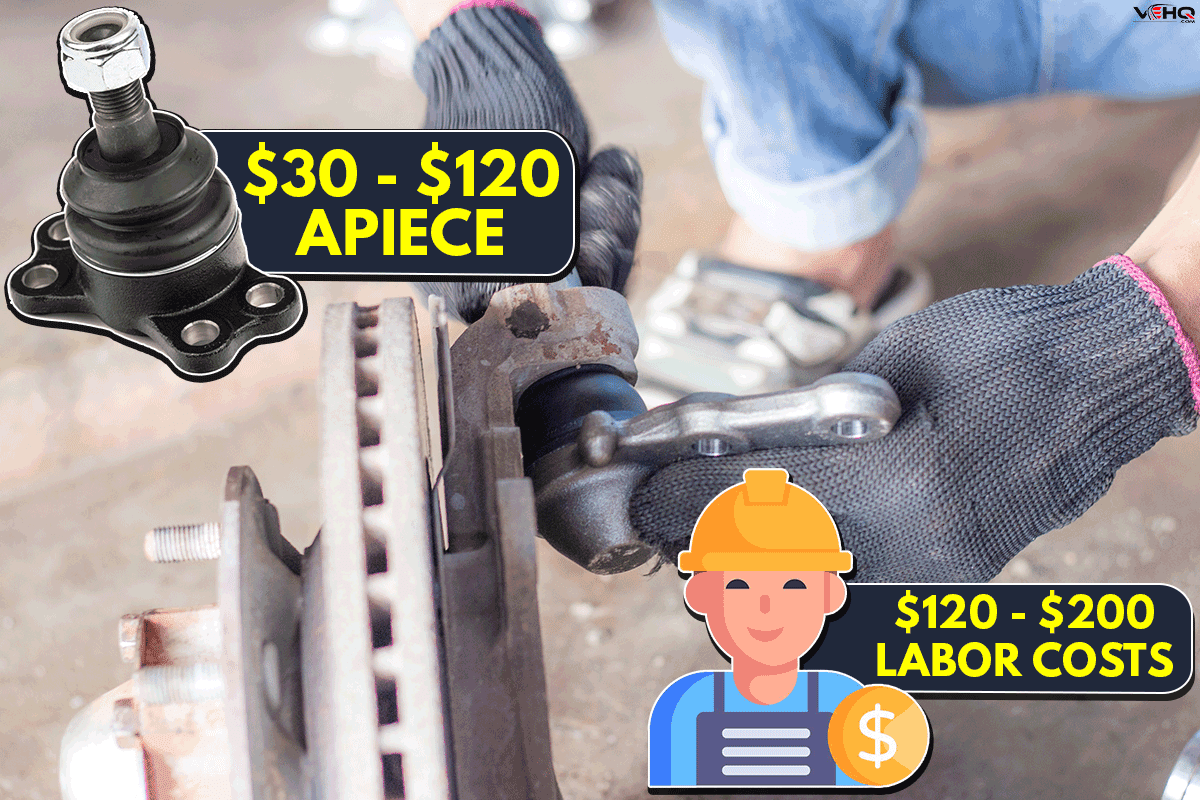Ball joints are part of your car's front suspension, allowing your front wheels to move independently and absorb shock. As such, they go through severe wear and tear, and you need to know when to replace them. We've researched this topic and found answers.
A professional can remove and replace the ball joints in an hour. Spare at least two to three hours if it's your first time replacing the ball joints. There's no need to rush doing such a repair; getting the process right is critical to achieving the best result.
Continue reading to learn more about the common signs to look out for when diagnosing a faulty ball joint and why ball joints are an essential component.
Time It Takes To Replace Ball Joints
When it comes to replacing ball joints, it's best to have an auto shop mechanic do it. Not only do they have the experience needed to do this kind of repair, but they're able to do so faster than a non-expert.
So, if it's time to replace your car's ball joints, take it to an auto shop. Instead of doing it yourself, it will take little time out of your day.
But if you want to save on labor costs, you can repair it yourself. However, you need the necessary tools and knowledge to do so. Take your time with each step to avoid accidents and ensure a satisfactory final result.
Check this lubricant on Amazon.
Are Ball Joints Important?

Now that you know how long it takes to replace the ball joints of a car, it's time for you to understand just what ball joints are and why they are important.
Ball joints not only cushion the shock that your car receives but also provide you with the pivotal movement for steering your car. They function similarly to the ball and socket joint of our hip. Because of this, you can enjoy a smooth ride on the road while still having precise control of where you wish to go.
The Different Types Of Ball Joints
The ball joints of your car come in two parts. And together, they provide the necessary vertical movement of your front wheels while still being able to control it with ease:
Upper Ball Joints
The upper ball joints take the shock from each turn you make. But they enable you to steer appropriately with ease.
Additionally, they wear out slowly because they use a follower design. It means that the upper ball joints only receive a shock whenever necessary. They don't bear the majority of the car's weight and force.
Lower Ball Joints
Most lower ball joints are responsible for supporting the weight of the vehicle. They act as the pivot point for the steering system. Plus, they wear out faster than upper ball joints due to the nature of their work.
As such, when it comes to replacing ball joints, most car professionals typically replace only the lower ball joints, except in some situations.
Certain lower ball joints, though, use the same follower design as upper ball joints. While they don't traditionally support the vehicle's weight, they help cushion the force from braking and turning into a corner.
Common Signs Of A Faulty Ball Joint

Some signs help determine if your car suffers from a faulty ball joint. Understanding what they are will help you detect such faults and address them immediately:
Rattling Noise
If you hear an irregular rattling or clunking noise coming from underneath your car, then it's highly likely that something is loose from its suspension. And if the noise gets louder each time you drive through an uneven road or over bumps, you can be sure that the ball joints have come loose.
Although, other car problems share a similar noise to that of a loose ball joint. So anytime you hear this kind of noise from your car, have a professional inspect the problem. Only they can tell you what is wrong with your car.
Loose Steering Wheel
If you find it difficult to steer your car or it often veers off ever so slightly where you want it to go, chances are loose ball joints are at fault. The issue is worrying, especially when you're on the road
Once you notice this, take your car to the nearest auto shop or have it towed to one. Other issues that share this sign are front-end misalignment and bad tie-rod ends. However, the ball joints are always a prime suspect in this scenario.
Cabin Vibrations
If you notice slight vibrations inside your far cabin whenever you drive, it's likely due to worn-out ball joints causing unevenness in the car's suspension. And the faster you go, the harsher the vibrating sensation becomes.
And while things like unbalanced wheels, axles, and driveshafts can cause this as well, it's not likely due to how sturdy those are. Ball joints suffer more wear and tear than these parts and can cause that unpleasant cabin vibration.
Uneven Wear On Tires
If you notice uneven wear on either one of your tires, then it's due to loose ball joints. It usually appears on only one of the front wheel tires. There are apparent signs of uneven wear when the tire's inside or outside track is more worn-down than its counterpart.
Sometimes, it also shows up as uneven patches due to the suspension not working correctly. As such, it's unable to absorb the shock correctly. If your front wheel tires have uneven wear, you're dealing with another issue altogether.
How Long Do Ball Joints Last?

Generally, ball joints have a lifespan of 70,000 to 150,000 miles before they need a replacement. However, external factors could lower the expected number.
Daily car use over rough roads can cause severe wear and tear. Water getting into the ball joints can cause corrosion. Lack of lubrication can also wear the metal down.
So, if your car is due for yearly maintenance, check the ball joints. This way, you will know when to replace your car's ball joints.
Check this ball joint removal tool kit on Amazon.
How Much To Replace Ball Joints?

On average, ball joints cost between $30 to $120 apiece, depending on what kind you wish to buy. Most vehicles only need ball joints worth around $60. Depending on your state, you will spend between $120 to $200 on labor costs.
If you send your car to an auto shop, you're looking at $150 to $400 in total repairs or somewhere in the neighborhood. However, if you have the time, tools, and knowledge, you can save around $70 to $320.
Check this ball joint on Amazon.
Can A Car Still Drive With A Broken Ball Joint?

While it's still possible for you to drive your car with a broken ball joint, don't do so. You are only increasing the wear and tear on the ball joints and risk getting into an accident.
In the worst-case scenario, you could lose control of your vehicle and end up in a serious accident. Even if you make it out of this unscathed, the repair costs needed to fix up your car can reach up to thousands of dollars.
Wish to know more? Check out this article that talks about more on this topic:
Driving On Bad Ball Joints – How Long Can Your Car Go?
To Wrap Up
Taking your car to the nearest auto shop is the fastest way of replacing your car's worn-down ball joints. You'll be back on the road after an hour or so of waiting. But if you want to save on labor costs or have a lot of time on your hands, replace them properly.
If you're looking for other similar articles on this topic, check these out:
How Many Ball Joints Are On A Truck And When To Replace Them
Is It Safe To Drive With A Shaking Steering Wheel? [Here's What You Need To Know!]



